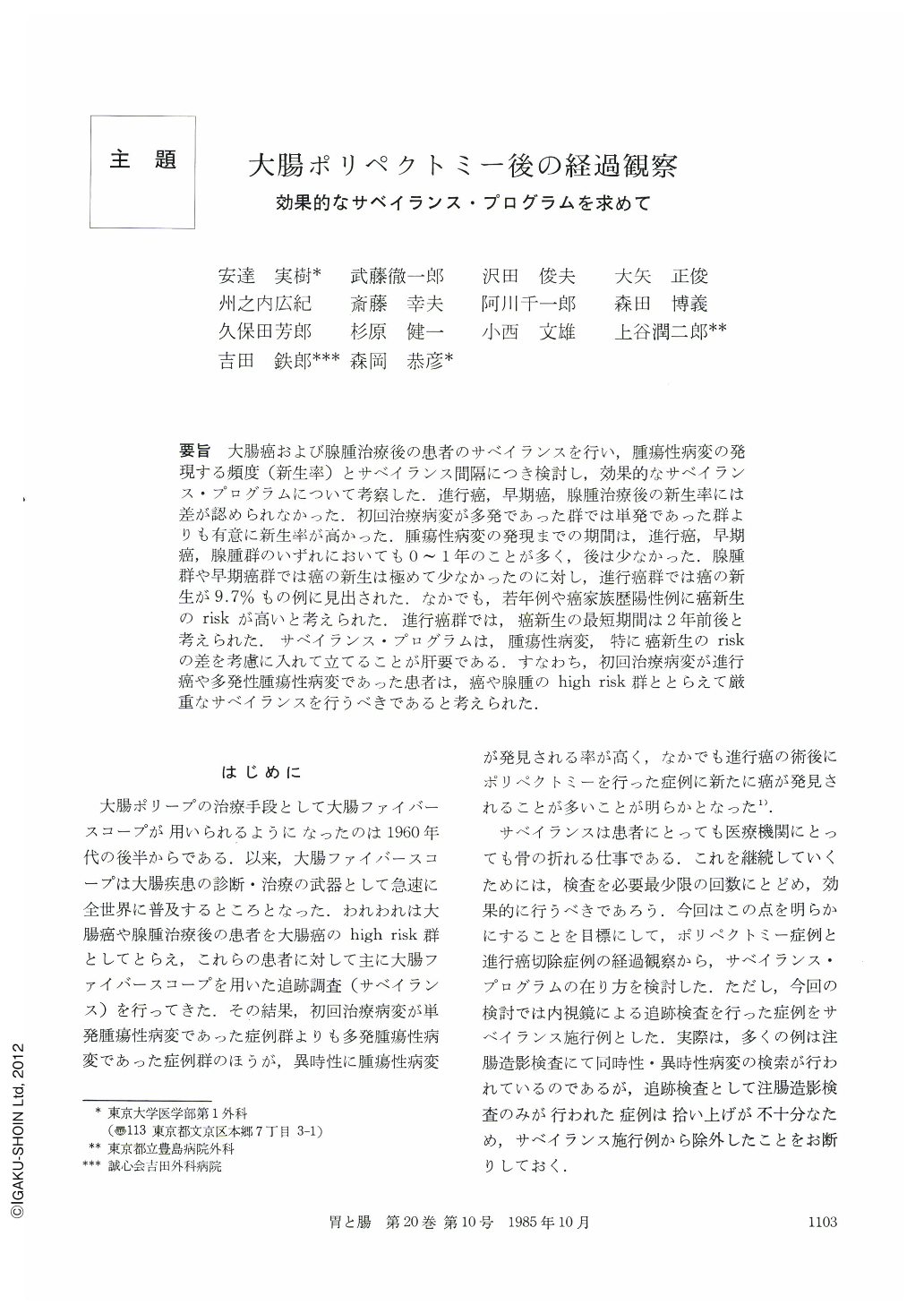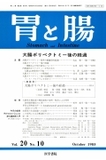Japanese
English
- 有料閲覧
- Abstract 文献概要
- 1ページ目 Look Inside
- サイト内被引用 Cited by
要旨 大腸癌および腺腫治療後の患者のサベイランスを行い,腫瘍性病変の発現する頻度(新生率)とサベイランス間隔につき検討し,効果的なサベイランス・プログラムについて考察した.進行癌,早期癌,腺腫治療後の新生率には差が認められなかった.初回治療病変が多発であった群では単発であった群よりも有意に新生率が高かった.腫瘍性病変の発現までの期間は,進行癌,早期癌,腺腫群のいずれにおいても0~1年のことが多く,後は少なかった。腺腫群や早期癌群では癌の新生は極めて少なかったのに対し,進行癌群では癌の新生が9.7%もの例に見出された.なかでも,若年例や癌家族歴陽性例に癌新生のriskが高いと考えられた.進行癌群では,癌新生の最短期間は2年前後と考えられた.サベイランス・プログラムは,腫瘍性病変,特に癌新生のriskの差を考慮に入れて立てることが肝要である.すなわち,初回治療病変が進行癌や多発性腫瘍性病変であった患者は,癌や腺腫のhigh risk群ととらえて厳重なサベイランスを行うべきであると考えられた.
It is well-known that patients having colorectal neoplasms are at high risk developing second neoplasms. Of 291 patients who underwent an initial treatment for colorectal neoplasms and surveillance colonoscopy, 129 had one or more new neoplastic lesions. The detection rate of new lesion (new lesion rate) was 46.9% in advanced cancer group, 35.7% in early cancer and 43.2% in adenoma group. The new lesion rate of the group with multiple lesions was 69.9%, which was significantly higher than that with single lesion (34.2%). Most of the new lesions were found within a year regardless of the mode of initial lesion. The new lesion rate was decreased year by year. The detection rate of new cancer was 9.7% in advanced cancer group, which was significantly higher than adenoma group (1.7%) and early cancer group (3.4%). Among the advanced cancer group, younger patients or patients in a cancer-family seemed to have higher risk of new cancer. From analysis of the time interval of new lesions, minimal interval of new cancer was assumed to be about two years.
From our observations, patients with a history of colorectal cancer or multiple neoplastic lesions, especially the young patients or the patients in a cancerfamily are recommended to have surveillance colonoscopy regularly.

Copyright © 1985, Igaku-Shoin Ltd. All rights reserved.


